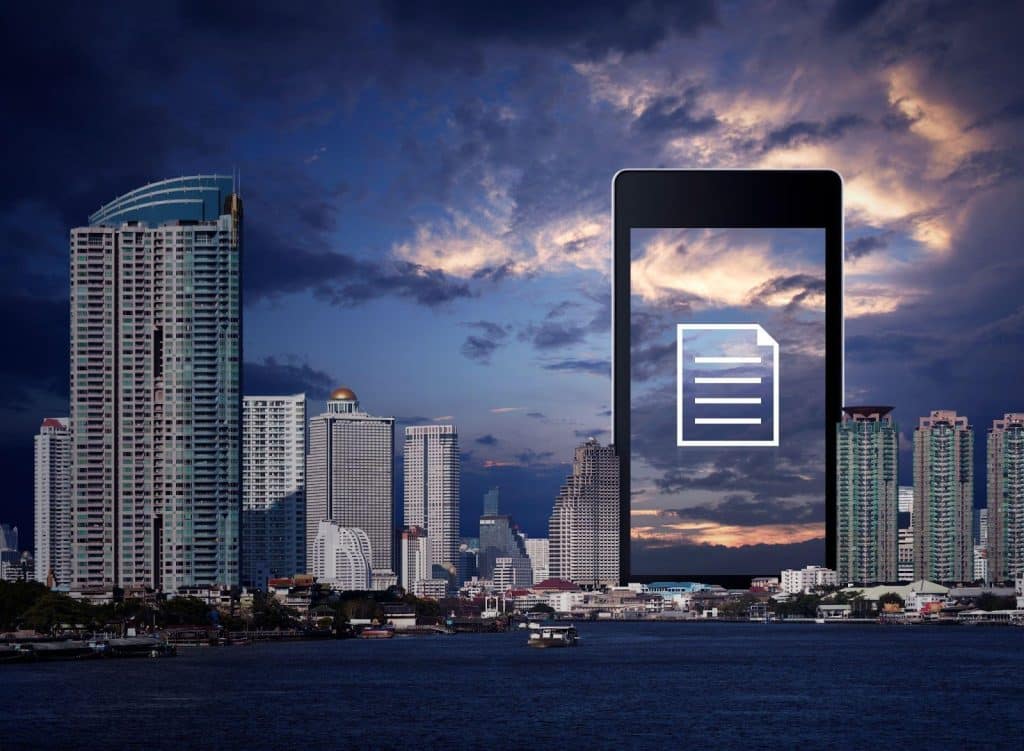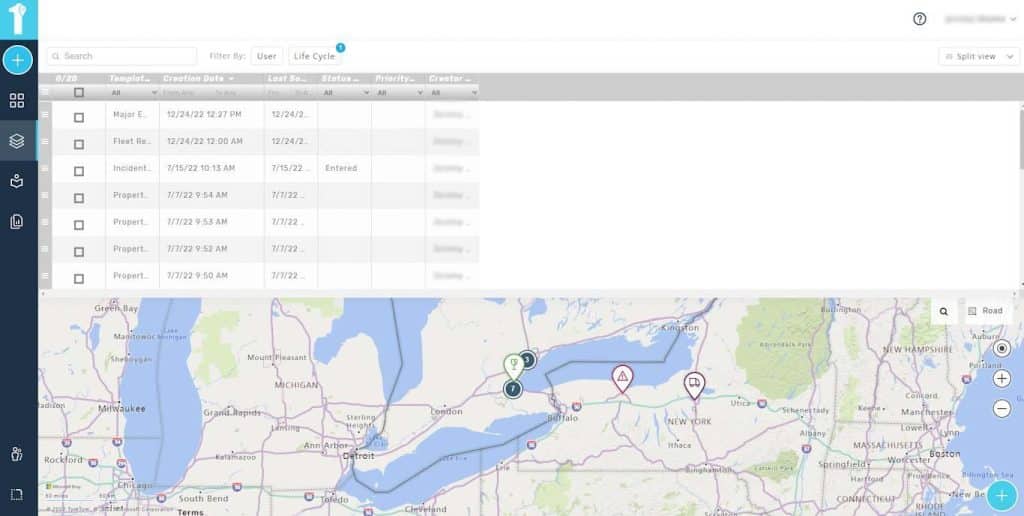Technology has elevated the best building inspection tools like nothing we’ve ever seen before. Now, more than ever, building inspection professionals have the best building inspection tools at their fingertips. In fact, never in history have we had so much technology accessible to us at one time. However, there’s a lot of clutter out there, so you must hunt amongst the weeds to find the best tools, apps, or other things that make the building inspection process more straightforward.
The best building inspection tools include some of the latest technologies that make the process more efficient and effective. Although things like drones have changed the landscape for visual inspections, real progress is being made in the software behind tools that make inspecting buildings more accessible than ever before in history.
In this guide, we will review some of the best technological advancements that building inspectors might use and take full advantage of to make their jobs more accessible and more efficient. Let’s save time and jump right into the best building inspection tools for 2023.
Building Inspection Tools Major Takeaways
| Aspect of Commercial Building Inspection | Historical Inspection Tools Example | Current Best Common Technology Example |
| Safety & Access | ladder | Scissor lift or other lift equipment |
| Aerial Photography & Inspection | n/a | Drone photography and videography |
| Meters & Measures | Measuring tape, bubble level | Screwdrivers, pliers, etc. |
| Hand Tools | Screw drivers, pliers, etc. | Power screwdrivers and other power tools |
| Inspection Software & Technology | Paper reports, documents | Inspection reporting software |
- Drones and flying camera and video systems change property and roof inspections
- Significant types of inspection tools include safety & access tools, aerial photography, meters, hand tools (flashlight, screwdriver), and inspection software
- The most significant advancements are in aerial photography and software
- Software is the most helpful change in tools for inspections in 2023
- 1st Reporting is leading the way in inspection reporting software for 2023
The Best Building Inspection Tools

Building inspections require a certain amount of tools for the inspector to complete their job accordingly. However, there is a distinction between a home inspector and a commercial building inspector, as the tools are also required. For the owners and managers out there, we’ll be focusing heavily on the commercial building inspector and the tools they need to get the job done right.
Commercial building inspection tools will vary depending on the size and scope of the facility. However, we can assume that the professional building inspector will also utilize various trade professionals to aid them in a thorough building inspection. Each trade will have its own tools, so the most you’ll likely need to worry about is coordinating lift equipment and access to all various areas of the building.
Let’s start by looking at the five major tool types that a commercial building inspector needs to use for a practical inspection.
Safety & Access
Depending on the operation currently residing in the facility, it might be necessary to take extra precautions regarding safety. A building inspector needs to start with the basic PPE (personal protective equipment) such as:
- Hardhat
- Safety vest
- Steel-toed boots
- Respirator (as required)
- Hearing protection (as required)
- Eye protection (as required)
If you’d like to learn more about managing PPE, read our guide: Complete Industry PPE Guide ( Personal Protective Equipment)
Accessing all the various areas of a commercial building to ascertain their conditions is critical, as you are aware. Therefore, you will need to have the following:
- 6’ A-Frame Step Ladder
- 24’ Extension Ladder
- Scissor Lift Or
- Articulated Boom Lift
Regarding the last two points, the scissor lift or articulated boom lift might not be a requirement, depending on the scope of the building inspection required. Many commercial building inspectors use powered lift equipment exclusively. It leads them to only carry a 6′ A-frame step ladder on their work vehicles in case of its required use. All other working at heights utilize powered lift equipment.
Aerial Photography & Inspection

Given the popular culture, I expect most people would assume that the drones and aerial photography segment are where you would expect to see the biggest steps forward. Despite the cultural phenomenon of drones’ popularity and the incredible new features of these flying machines, some of the biggest changes have occurred in areas of technology you don’t see. That is to say, software.
Drones used by commercial building inspectors are rare, but they are gaining momentum. Aerial photography of commercial buildings for real estate is where you will see the most considerable adoption of aerial drone technology. Commercial building inspections have yet to adopt drone technology so readily. For this reason, although drones and drone tech have lept forward by leaps and bounds regarding commercial building inspection, drones are still a few years off from being widely used.
Benefits of Drone Technology for Commercial Building Inspections
- Very inexpensive compared to the use of helicopters
- See inaccessible areas
- Bird’s eye view of roof and property
Liabilities of Drone Technology for Commercial Buildings Inspections
- Expensive for limited use during an inspection
- Low flight times due to current battery technology
- Windy days make many drones inoperable
Meters & Measures
A robust commercial building inspection will need to have some particular tools regarding the ability to take proper measurements. The following are the recommended meters that most commercial building inspectors carry and use on their inspections.
- Voltage and Amperage Meter
- Moisture Meter
- HVAC Penetration Probe
- Thermometer (infrared type)
- Gas Detector
- Tape Measure
- Laser Distance Finder
Each of these meters and measuring devices may be optional, depending on the type of facility inspected. However, in general, commercial building inspections require the majority of these meters and measuring devices, so it’s best to include them in the ‘inspection toolbox’.
Utilizing appropriate meters and measuring devices is critical. However, without recording the data in a proper form or template, having the meter becomes a moot point. We recommend trying our app, 1st Reporting, to record your measurements and meter data from your inspection. We’ll talk more about the app later.
Hand Tools
There are several hand tools that most commercial building inspectors use and carry about on their inspection. Typical tools include the following:
- Flashlight
- Screwdrivers
- Phillips
- Standard Slotted
- Torx
- Roberston
- Adjustable Pliers
- Adjustable Wrench
- 4-Foot Level
- Laptop, tablet, or smartphone
- Camera
Inspection Software & Technology

To review all of the tools, meters, PPE, and other items that the standard commercial building inspector might use, we find one glaringly obvious fact: many of these items have mostly stayed the same in the last number of years. For example, screwdrivers, ladders, safety glasses, and all of these items remain very similar to their counterparts from one hundred years ago. Perhaps the modern versions are better formed. Then again, perhaps not.
The most considerable changes in technology, even from a mere one or two years ago, remain with the software we use today for inspections. That is also true of the technology we use for operating said software programs. Obviously, our current technology position is that we are all in. It appears that the rest of the world will follow suit, given that, according to Statista, there were 6.259 billion smartphone users on Earth in 2021. They project that by 2027, there will be 7.690 billion smartphone users. If Worldometers is correct with their projection of 8.333 billion people on Earth in 2027, that would mean that the forecast is that in 2027, 92.28% of humans on Earth are going to have a smartphone.
The advent of “smart” technology brings with it an increase in potential efficiency like we’ve never seen before. The question isn’t whether or not you should adopt the technology. The question is, why haven’t you already? If you need to figure out how to adopt the latest technologies to increase your inspection efficiency, then let me shed some light on how the latest smart programming will change your inspections forever.
The Best New Inspection Software
When we started 1st Reporting, we wanted to commit to creating a technological solution for managing inspections and incidents in any size of an organization. It’s taken some time, but technology is finally catching up to our dream, and you can take advantage of it. We’d like to introduce you to how you can take advantage of this changing and evolving technology ahead of your competitors to make your organization take the lead in efficient operations. Let me introduce you to the 1st Reporting App, available on Google Play and The Apple App Store.
Now, I know what you’re thinking – that this is a shameless plug, but there’s something here that you need to know – this software can give your company the edge in more than just inspections. We’ve got the tools to boost multiple aspects of your business, including health and safety management.
In any organization, you know that discretionary and variable expenses are sometimes out of our control. To meet compliance, insurance, taxes, and labor are all expenses we must pay as business leaders. However, even though we have no choice, it doesn’t sting the budget or the bottom line. The question is, how can technology help to reduce some of these expenses?
Here are a few of the features of 1st Reporting that help drive cost-effectiveness in any organization that utilizes this software:
- Automated Simple Communication Processes.
- Dynamic Custom Forms
- Convenient Manager’s Dashboard
Automated Simple Communication Processes
If there’s one thing that got under my skin managing service crews, it is forgetfulness. Forgetfulness is something that we all deal with every day. According to Wikipedia, the forgetting curve hypothesizes the decline in memory over time. According to the theory, people must remember about 50% of what they learned the previous day.
If people can so readily forget to do things, like confirm with their supervisor upon job or inspection completion, it would undoubtedly be of use to have an automated way of remembering. That’s the 1st place 1st Reporting works for you. Here’s how it works:
- You set your teams in the app and the appropriate supervisor for your specific inspections, forms, or incident reports.
- A team member completes their report.
- An instant notification automatically goes to the appropriate supervisor upon submitting the completed report. Never again will someone forget to check in – there’s no need when automation does it for you.
Dynamic Custom Forms
There are situations where a form or report needs a direction change. Traditional forms often require multiple ‘if applicable’ queries to cover these mid-report direction changes. Traditionally, printed paper forms have worked great for hundreds of years, but they can’t adapt. You physically have to alter them and print revised versions; what a lot of work!
Imagine a world where you can make a form that works on your team’s phones. A form that changes based on the answers provided; that is a dynamic form that adapts to the situation. With a simple setup, you can use the 1st Reporting app’s custom form builder to create dynamic forms that adapt to your operational requirements. Fantastic, if you ask me. I wish I had had this app when I was managing crews on the road, and it would have made our lives a lot easier, I can assure you.
Convenient Manager’s Dashboard
Have you ever had to compile a bunch of paperwork? Not typically a fun assignment, is it? Sometimes, that paperwork is messy. Sometimes, team members need to remember to add items, making things even more challenging to manage.
The 1st Reporting app provides a simple solution for many issues, one of which is organizing reports in a way that makes sense. Let me introduce you to the manager’s dashboard of the 1st Reporting app.

Managing teams, primarily when you deal with multiple locations, multiple facilities, or have teams that work remotely, trying to keep track of paperwork can be a real challenge. However, using the manager’s dashboard views of the 1st Reporting app lets you easily see where your team completed specific reports. You can track a team’s progress using multiple checklists or reports. Here’s an example scenario that makes managing with 1st that much easier.
For example, let’s take a utility company and apply the application to their situation. This company might oversee power lines within a specific region. They might possess multiple field crews that work around the clock to restore power and provide other services to repair and maintain power infrastructure. Let’s say the company has a modest fleet of twenty service vehicles managed by three supervisors who rotate shifts. A few examples of the reports this company might need are:
- Vehicle Daily Walk-Around Inspection Report
- Fleet Repair Request
- Site Condition Report
- Electrical Inspection Checklist
Each service vehicle would need a binder to keep track of the potentially numerous forms and report templates required to complete their work effectively. These service crews would likely utilize smartphones to communicate for dispatching and other reasons. Why not forget the binder and add all these forms into a single application solution?
For any service company, moving to digital forms makes sense. With a robust manager’s dashboard, it’s easy to see what reports your team completes and where they complete them.
In our example, supervisors might manage crews by providing instruction for crews to complete specific reports or inspections at specific times or within particular stages of an operation. For instance, teams would perform a vehicle walk-around inspection prior to leaving to work on a job site for the morning. Upon arriving on site, a site inspection report requires completion. These reports allow specific automated notifications from the 1st Reporting application environment right to the supervisor’s phone or another device (they even work with Microsoft Teams®). Subsequently, due to the notification, a manager might easily track a crew’s location and progress utilizing notifications or dashboard tracking on their smart device (phone, laptop, tablet, or desktop).
The implications for running a smooth, efficient, and semi-automated operation are becoming increasingly apparent. Let 1st be your partner for all your company inspection, incident, and other reporting needs. Try it yourself and see what we’re talking about here.
Conclusions for 2023 Building Inspection Tools
Suppose we’ve come to any conclusions here. In that case, the most significant change to the tools utilized by commercial building inspectors happens to reside in the realm of software. One considerable leader of this evolution is the applications used for recording data gleaned from an inspection, event, or incident. At 1st Reporting, we’ve maintained our stance as an industry leader to this effect. We invite you to try our application for yourself and witness the firsthand power that 1st delivers.